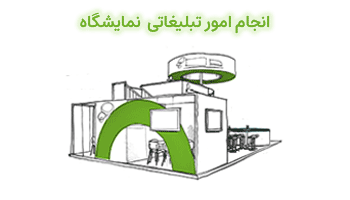News of Aquatex Oman
Time left to the end of event
Available services for Aquatex Oman
Aquatex Oman travel services
Aquatex Oman Exhibition services
Most visited Water & Waste Management, Environment
Video clips of Aquatex Oman
More Information about Aquatex Oman
- More Less
Why Exhibit At Aquatex Oman?
-
Oman has only about 1 cubic km of renewable water resources and as a result its per capita freshwater withdrawal is only 529 cubic meter per capita per year (CIA Fact book). It has no surface water to speak of, and as a result relies heavily on groundwater and desalination. Of a total of 168 M m3 of water used each year, 114 M m3 is derived from groundwater, 55 M m3 comes from desalination, and 12 Mm3 from reclaimed wastewater that is collected and reused for municipal landscape irrigation. It is estimated that, three-fourths of the supply returns to the hydrological cycle as wastewater or through pipe network leakage. Oman has a wastewater treatment capacity of over 100,000 cubic meters per day, and is currently constructing more wastewater treatment plants, with an estimated 230,000 cubic meter per day of new capacity to be built shortly.
-
In Oman, 85% of tap water presently consumed, comes from sea water, which is desalinated by desalination plants located throughout the country. In 2035 water networks will have to more than triple in order to supply piped water to more than 90% of the Omani population. The water demand in the Sultanate of Oman in the last few years has increased in total of 15% per year– as a result of the robust economic and demographic growth in the country.
-
Currently, the significant lineup of multi-billion water desalination projects and waste water treatment projects has been attracting a lot of investment in new infrastructure. Further, the government’s decision to move away from publicly owned utility segments has resulted in a host of opportunities for the private sector.
Exhibitor Profile of Aquatex Oman 2016:
- Activated Alumina / Carbon
- Aeration Equipment & System
- Analyzers & Analytical Instruments
- Arsenic Removal Systems
- Automation Control Systems
- Bacteria Culture
- Bag Filters & Cartridges
- Blowers
- Boiler Plant & Components Suppliers
- Boiler Water Chemicals
- Boilers, Cooling Towers
- Bottle Manufacturers – Pet
- Bottling Plant Manufacturers
- Carbon Filters
- Chemicals Cooling Towers
- Chemicals Effluent Treatment
- Chemicals De-scaling
- Chemicals Fluoride Removal
- Chemicals Reverse Osmosis
- Chemicals Sewage Treatment
- Chemicals Swimming Pools
- Chemicals Thermal Desalination
- Chemicals Wastewater Treatment
- Chemicals Drinking Water Treatment
- Chiller/Cooling Systems
- Coagulants & Flocculants
- Concentration Analyzers
- Conditioners & Purifiers
- Conductivity Meters
- Consultants – Environment
- Consultants Water Treatment
- Control Panels & Regulators
- Controllers
- Cooling Towers
- Clarifiers
- Coagulants & Flocculants
- Concentration Analyzers
- De-chlorinators
- De-mineralization Plant
- Demonstrators
- Density Analyzers
- Desalination & Distillation Systems
- Diffused Aeration Systems
- Disinfectants
- Distillation Units
- Dosing Pumps
- Drinking Water Equipment
- Effluent Treatment Plants
- Effluent Treatment Systems
- Electrochlorinators
- Electrolysers
- Evaporators
- Filter Cartridges
- Filter Housings
- Filter Presses
- Filtration Equipment
- Filtration Media & Plants
- Fittings – Metal, PE/PP/Other Plastics
- Flow Meters
- Fluoride Removal Systems
- Heat Exchangers
- Heating Elements & Thermostat
- Hoses
- Hydro-pneumatic Systems
- Instrumentation & Process Control
- Iron Removal Systems
- Irrigation Pipes
- Level Controllers
- Magnetic Water Conditioners
- Mechanical Couplings
- Membrane Diffusers
- Membranes - Nano & Ultra filtration
- Membranes Reverse Osmosis
- Mineral Water Plant Suppliers
- Mineral Water Suppliers
- Misting Systems & Misting Pumps
- Nozzles
- ORP Meters
- Ozone Generator
- Ozone Systems
- Packaged Drinking Water
- pH Meters
- Pipes & Valves
- Pipes Fittings
- Plant Builders
- Pressure Gauges
- Pressure Switches
- Pressure Vessels
- Process Control Instruments & Software
- Pump Spares & Service
- Pumps and Motors
- Pumps Reverse Osmosis
- Rainwater Harvesting
- Resins
- Reverse Osmosis Components
- Reverse Osmosis Housings
- Reverse Osmosis Plant & Equipment
- Sand Filter
- Sewage and Sludge Treatment
- Sewage Treatment Plants
- Sludge Dewatering
- Solar Water Heaters
- Storage Tanks
- Strainers
- Swimming Pool Components
- Swimming Pool Filtration Plants
- TDS Indicators
- TDS Meters
- Testing Equipment
- Ultrapure Water Systems
- Ultraviolet Equipment
- Ultraviolet Treatment
- Wastewater Treatment Plants
- Water Bottling And Packaging Machinery
- Water Bottling Equipment
- Water Conservation
- Water Conservation Devices
- Water Coolers / Dispensers
- Water Drilling And Boring Equipments
- Water From Air
- Water Management Systems
- Water Meters
- Water Pollution Monitoring
- Water Purifiers
- Water Softeners
- Water Storage Tanks
- Water Supply & Services
- Water Testing Equipments / Kits
- Water Treatment Chemicals
- Water Treatment Plants
- Water Treatment Servicing
- Zero Liquid Discharge Systems
For further information, please click here . -
Venue of Aquatex Oman
- Oman International Exhibition Centre (OIEC)
P.O. Box 117, P.C. 111, Muscat International Airport, Oman.
Recent events in Muscat
Weather Forecast of Aquatex Oman
Comment
You can also enter your comment about this event
Event rate of 1 vote
Aquatex Oman will be held 05 to 07 Dec 2016 in Muscat, Oman. Aquatex Oman is one of the most distinctive and comprehensive water event in Oman showcasing latest technologies in the water and wastewater management sector. Aquatex Oman is intended as a perfect gateway for stakeholders from across the globe to penetrate into the vast and dynamic ecosystem of the Sultanate of Oman’s water industry to share business opportunities, network and explore innovative water solutions. The exhibition provides an ideal platform for key decision makers within the industry, allowing major equipment importers, distributors and agents to network and discuss new business opportunities in this quickly evolving industry in Sultanate and nearing countries. Aquatex Oman is an event and I like events...











